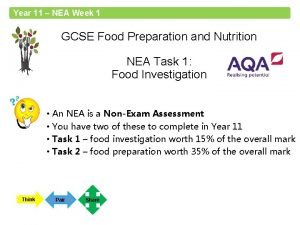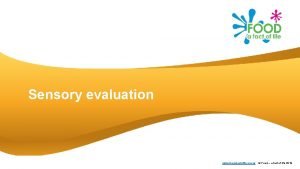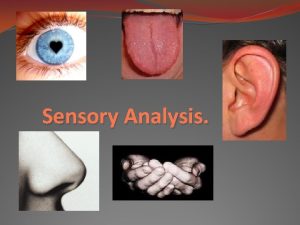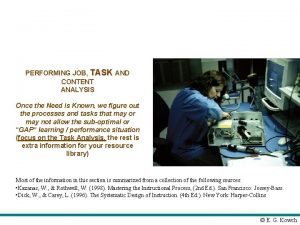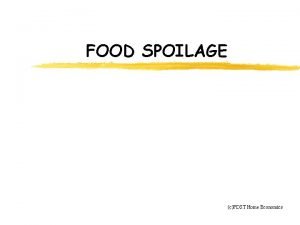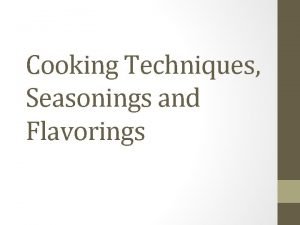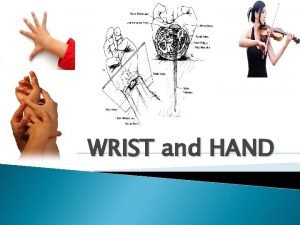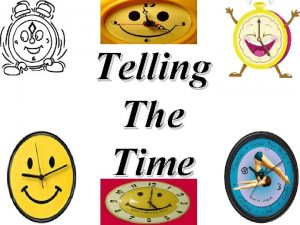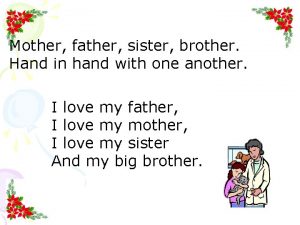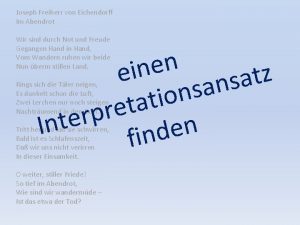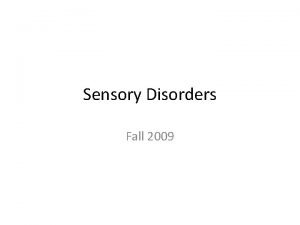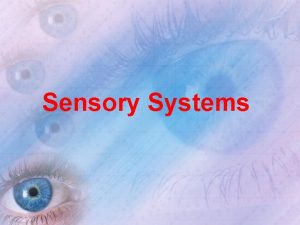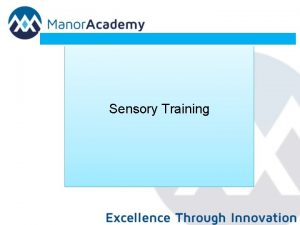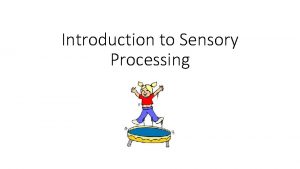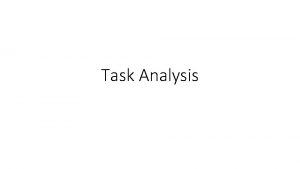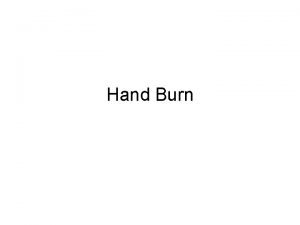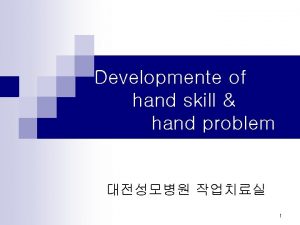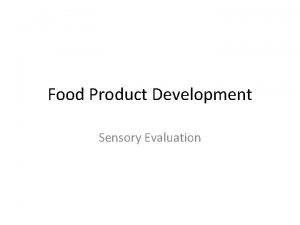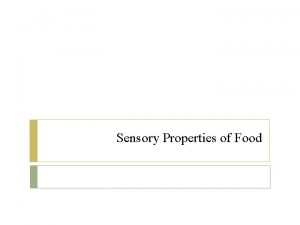Food Technology Sensory Analysis Starter task Hand in














- Slides: 14

Food Technology Sensory Analysis Starter task: Hand in homework 1 of 12 © Boardworks Ltd 2005

Learning objectives 1. 3 Evaluating the prepared dishes in terms of presentation, taste and texture. 2 of 12 © Boardworks Ltd 2005

Starter tasks: In groups collect a white board & a blind fold. Sit in your groups. Group 1 – Group 2 – Group 3 – 3 of 12 © Boardworks Ltd 2005

Describing a product Urgh, This is. Ivery don’t like nice! this! What statements do people usually make when they taste and try out food? If food is being tasted as part of research to help develop food products, such statements should not be used – in fact they are banned! This is because they do not tell you any detail about the product being tasted – for example, how you could make it nicer or less horrible. Instead, descriptive adjectives should be used to describe the product. WHAT SENSORY ORGANS ARE USED WHEN WE TASTE FOODS? First to show 5 answers on whiteboard 4 of 12 © Boardworks Ltd 2005

Taste test • Choose one person in your group to do the testing exercise. • They must leave the room. • 1 point for each correct guess. 5 of 12 © Boardworks Ltd 2005

What sensory organs are used? Hear the snap of a crunchy biscuit and the fizz of a drink. Touch a ripe pear and crusty bread. Taste lemons, chocolate and blue cheese. Smell coffee and bread freshly made. See a ripe banana and a trifle decorated with piped cream. When tasting food and describing what the food is like, descriptive adjectives should be used. This is done by using all five sensory organs. 6 of 12 © Boardworks Ltd 2005

Can you guess the food being described? a crumbly and fatty base with a yellow, rich, fatty, sweet, light brown with a ajuicy, fragrant, meaty, juicy, a little orange, spicy, sweet a little and smooth, tangy and sweet filling as well yeasty, crumbly, doughy bit of sweet, a crunch but then smooth chewy, aoval long fruit thin shape as a light, fluffy and eggy topping lemon meringue mango bread chocolate sausage pie 7 of 12 © Boardworks Ltd 2005

How is sensory analysis carried out? How can sensory analysis be carried out so that it is fair? In your group give 3 conditions. Three different types of test (descriptive, preference and discrimination) are used in sensory analysis. 8 of 12 © Boardworks Ltd 2005

Sensory tests involve giving people samples of food and asking them to use their senses to judge its: appearance smell taste texture. Mmm. That tastes and smells great, it looks crunchy, and I love crunchy food. Not sure I fancy that. Smells a bit spicy for me, and looks like you’d need a hammer to crack it. The trouble is, they are both looking at the same plate of food. People like different things. This makes the data from tests like these subjective – a matter of opinion. 9 of 12 © Boardworks Ltd 2005

Sensory Tests - Rating – • products are scored on a 5 point scale according to the liking of the product. • Samples can be scored to evaluate specific characteristics e. g. flavour, aroma, quality. • Comments should be recorded. 10 of 12 © Boardworks Ltd 2005

Profiling test or star diagram Characteristics of a product can be profiled and then compared with other samples of a competitor’s products. Below is a star diagram, each line is marked 1 to 10 (1 the least & 10 is the most) and each line is labelled with a descriptor. 11 of 12 © Boardworks Ltd 2005

Now you have learnt about the tests, use your knowledge in your groups from yesterday, set up a sensory evaluation test. 12 of 12 © Boardworks Ltd 2005

Key points Sensory analysis is a key activity as it guides decisions about food products. Sensory analysis uses all the senses to systematically taste food and record the experience. There are descriptive, preference and discrimination tests. Each test is suitable for different purposes and situations. Descriptive tests are used for evaluating food against a specification. Tests should be fair to get accurate results. 13 of 12 © Boardworks Ltd 2005

Next lesson: Make choice of curry Homework: Complete time plan for Masterchef dishes 14 of 12 © Boardworks Ltd 2005
 Gcse food tech nea 2 example
Gcse food tech nea 2 example Starter task
Starter task Food a fact of life sensory analysis
Food a fact of life sensory analysis Analysis starter
Analysis starter Content analysis and task analysis
Content analysis and task analysis Tiered task bias task
Tiered task bias task Cpdst
Cpdst Dry method of cooking
Dry method of cooking Unit 2 food food food
Unit 2 food food food Sequence of food chain
Sequence of food chain Jersey finger
Jersey finger Time with hands
Time with hands Father mother sister brother hand in hand with one another
Father mother sister brother hand in hand with one another Man machine chart example
Man machine chart example Wir sind durch not und freude gegangen hand in hand
Wir sind durch not und freude gegangen hand in hand
